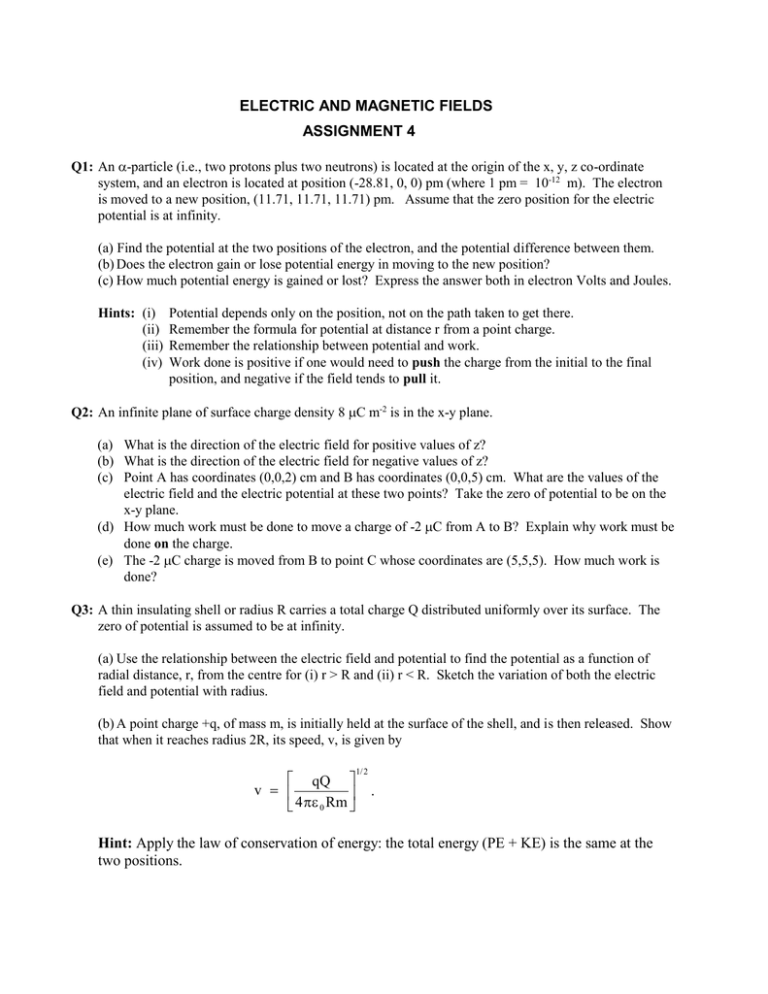ELECTRIC AND MAGNETIC FIELDS ASSIGNMENT 4
advertisement

ELECTRIC AND MAGNETIC FIELDS ASSIGNMENT 4 Q1: An -particle (i.e., two protons plus two neutrons) is located at the origin of the x, y, z co-ordinate system, and an electron is located at position (-28.81, 0, 0) pm (where 1 pm = 10-12 m). The electron is moved to a new position, (11.71, 11.71, 11.71) pm. Assume that the zero position for the electric potential is at infinity. (a) Find the potential at the two positions of the electron, and the potential difference between them. (b) Does the electron gain or lose potential energy in moving to the new position? (c) How much potential energy is gained or lost? Express the answer both in electron Volts and Joules. Hints: (i) (ii) (iii) (iv) Potential depends only on the position, not on the path taken to get there. Remember the formula for potential at distance r from a point charge. Remember the relationship between potential and work. Work done is positive if one would need to push the charge from the initial to the final position, and negative if the field tends to pull it. Q2: An infinite plane of surface charge density 8 C m-2 is in the x-y plane. (a) What is the direction of the electric field for positive values of z? (b) What is the direction of the electric field for negative values of z? (c) Point A has coordinates (0,0,2) cm and B has coordinates (0,0,5) cm. What are the values of the electric field and the electric potential at these two points? Take the zero of potential to be on the x-y plane. (d) How much work must be done to move a charge of -2 C from A to B? Explain why work must be done on the charge. (e) The -2 C charge is moved from B to point C whose coordinates are (5,5,5). How much work is done? Q3: A thin insulating shell or radius R carries a total charge Q distributed uniformly over its surface. The zero of potential is assumed to be at infinity. (a) Use the relationship between the electric field and potential to find the potential as a function of radial distance, r, from the centre for (i) r > R and (ii) r < R. Sketch the variation of both the electric field and potential with radius. (b) A point charge +q, of mass m, is initially held at the surface of the shell, and is then released. Show that when it reaches radius 2R, its speed, v, is given by qQ v 4 0 Rm 1/ 2 . Hint: Apply the law of conservation of energy: the total energy (PE + KE) is the same at the two positions.




